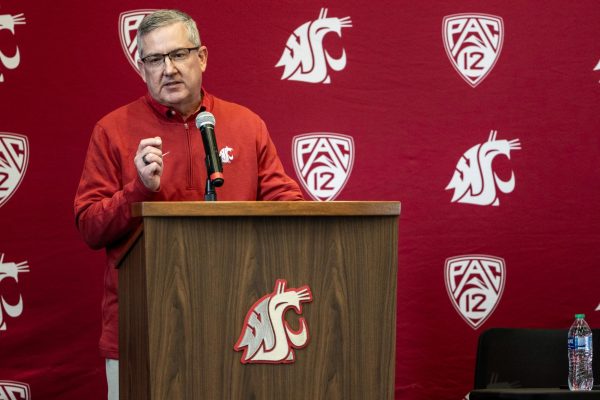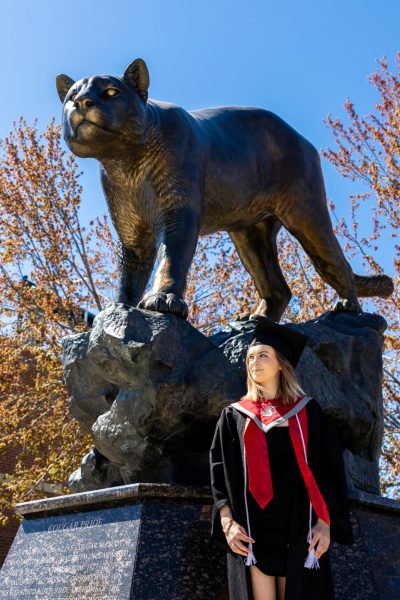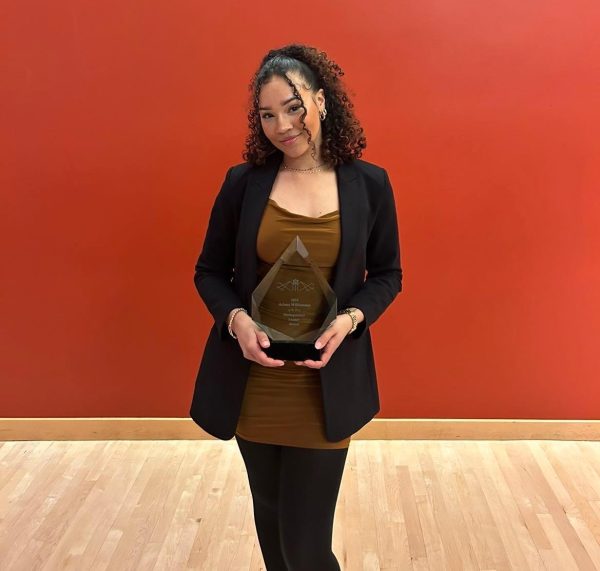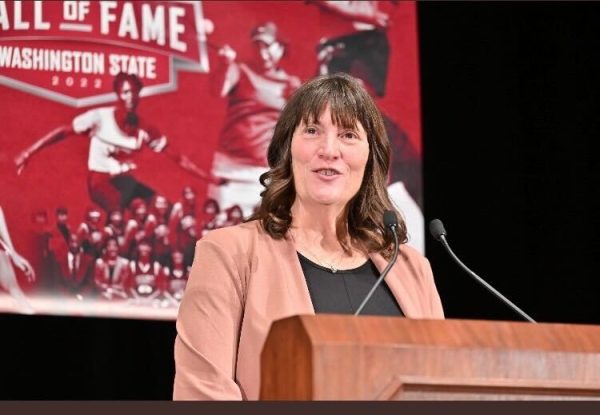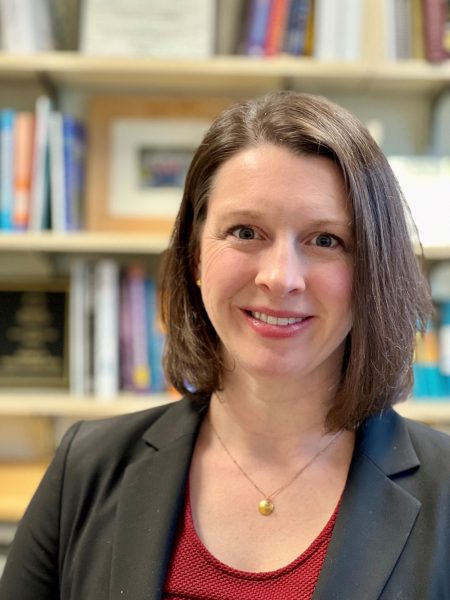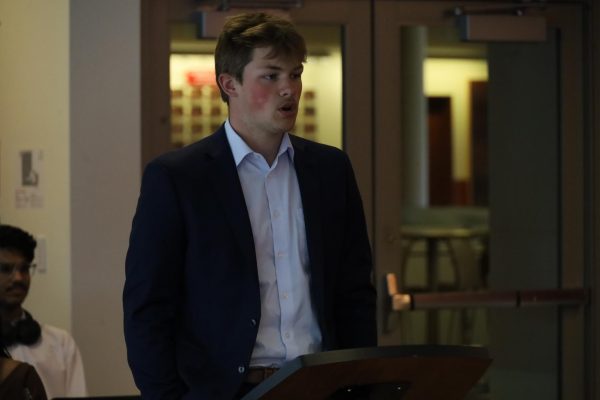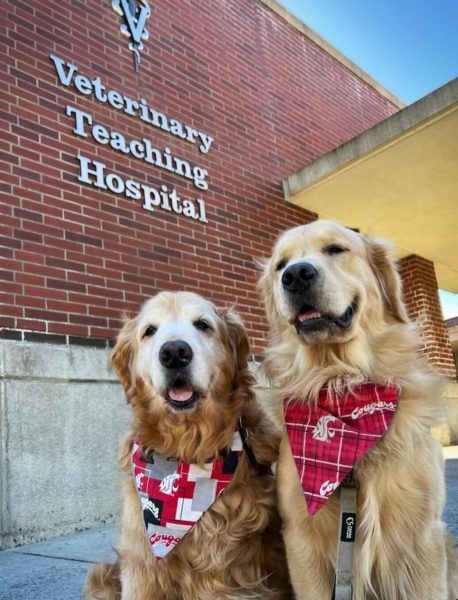Blood, sweat and transistors
Sponsorship coordinator Camilla Smith works on programming for use on an Oculus Rift development kit. A partnership with Major League Hacking allowed access to such technologies at Hackathon.
March 29, 2016
Tech students put their heads together Saturday for a coding marathon to create imaginative programming and hardware at the 2016 Hackathon. A Pullman Transit tracking app for iOS took the medal.
Hackathon is a competition, and to create an even playing field, each team must begin the 24-hour gathering with only an idea.
“Our biggest rule is that the project can’t have been worked on previously,” said Camilla Smith, a senior majoring in computer science and sponsorship coordinator for Hackathon. Smith sat at a workstation using the Oculus Rift, a state-of-the-art virtual reality device, busy programming a game where gun-like arm movements shoot enemies flying toward the player through the Rift’s eyepiece.
Smith said the annual competition is meant to foster younger computer engineers and provide a platform to practice their education through creativity. But, she said, anybody with an interest can participate.
Competitors included Adithiya Vivek, a freshman studying computer engineering. His group set out to create a virtual version of the board game Risk. Starting is tough, Vivek said, because creating a functioning game from scratch is a complex task.
“It’s a mix of a board game with a dice game,” Vivek said. “It’s a lot of components.”
He said by splitting the endeavor into chunks for his five-person team, the work of creating a simplified game board and all the coding necessary to perform the tasks needed for a functioning game is less daunting.
Leah Zulas, a master’s student studying computer science, sewed LED lights onto strips of cloth. Various soldering equipment, transistors and strings covered the workstation. Zulas and research professor Aaron Crandall had been working on a way to add a light show to the clothing of a professional entertainer in Chicago.
Their project consisted of two parts, Zulas said. The first were lights down the sleeve, using an accelerometer to illuminate the person’s arms while they juggle, breath fire and perform other stage tricks. The second component was a set of juggling balls which serve a similar purpose.
Zulas was one of the few people in the room not over a computer; about 90 percent of the participants worked on software programing projects.
“What we are doing in here is so his fun stuff he does in Chicago will look even better,” Zulas said.
A new partnership with the organization Major League Hacking helped the event attract more students, Smith said. MLH partners with universities around the country to help tech students learn and create at similar Hackathon events. Smith said close to 200 people attended this year’s event, up from 150 last year.
Sponsors of the 2016 event included Schweitzer Engineering Laboratories, Micron, EMC^2 and Spacelabs. The first-place winners are team Q.T, Tyler Cruz and Quang Nguyen. According to an email sent after the competition by facilitators, they made an iOS app that tracks WSU buses by how many stops away they are from a particular stop. When the bus is a certain number of stops away, the user will receive a notification.








